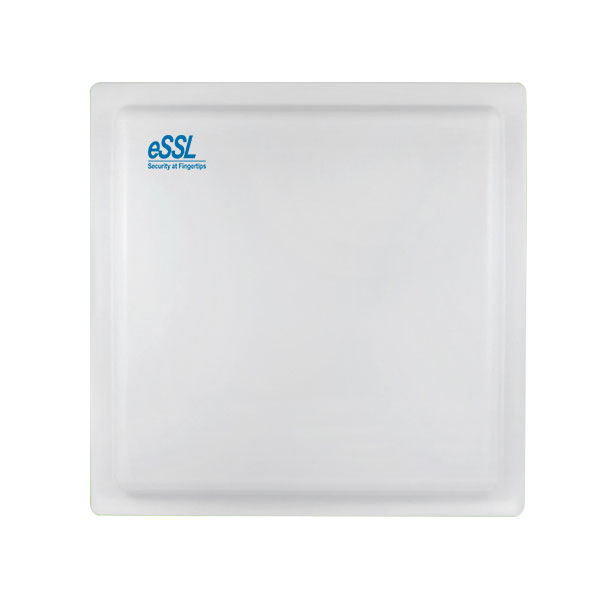What Is UHF 1-10 / 2-10?
UHF 1-10 / 2-10 refers to a high-performance UHF RFID reader model engineered for long-range, rapid, and multi-tag identification. Designed with robust specifications, it caters to a wide range of industrial and commercial applications.
Core Features of UHF 1-10 / 2-10:
- Read range: Up to 12 meters (adjustable)
- Read sensitivity: Line polarization read mode
- Communication: Wiegand 34-Bit (switchable to 26-Bit via software)
- Mounting: Comes with a secure mounting plate
- Weatherproof: Rated IP66 for outdoor durability
- Working modes: Trigger read & Always read
- Cable distance: Max 100m
- Multi-tag capability: Recognizes multiple tags simultaneously
Ideal Applications:
- Warehouse inventory
- Vehicle access control
- Asset tracking
- Manufacturing automation
Why UHF 1-10 / 2-10 Is a Game-Changer
Long-Range Precision
The ability to read RFID tags from up to 12 meters away dramatically reduces manual labor. Employees no longer need to be near assets to track them—data is gathered automatically and wirelessly.
Multiple Tag Recognition
Unlike barcode scanners that require line-of-sight and individual scanning, UHF 1-10 / 2-10 can read multiple tags simultaneously. This drastically speeds up inventory processes.
Plug-and-Play Integration
The reader supports Wiegand interfaces and offers dual modes (trigger or continuous read). It’s compatible with existing access control systems and asset management platforms, making deployment quick and cost-effective.
Applications Across Industries
- Warehousing & Inventory Management: Track goods in real-time and reduce shrinkage.
- Supply Chain Tracking: Real-time monitoring reduces delays, theft, and misplacement.
- Access Control Systems: Enable touchless entry with rugged and reliable performance.
- Event Management: Fast check-ins and enhanced security for large-scale events.
Technical Deep Dive: How It Works
- The reader emits a radio signal.
- RFID tags within range respond with unique identification data.
- The reader captures, decodes, and transmits the data to the backend system.
This data can then be viewed in real-time or stored for analytics.
Included Software Features:
- Bit format customization (26 or 34-bit Wiegand)
- Distance and sensitivity adjustment
- Real-time monitoring and alerts
Why It Outperforms Traditional Systems
| Feature | Barcode Scanner | NFC | UHF 1-10 / 2-10 RFID Reader |
|---|---|---|---|
| Read Range | < 0.5 meters | < 0.1 meters | Up to 12 meters |
| Speed | One-by-one | One-by-one | Multi-tag simultaneous |
| Line-of-Sight | Required | Required | Not required |
| Environmental Suitability | Indoor only | Limited | IP66 outdoor proof |
Installation & Deployment
Setting up UHF 1-10 / 2-10 is straightforward. The included mounting plate simplifies physical installation. It connects easily to access control panels or inventory systems via Wiegand interface, and its 100-meter cable capacity ensures flexibility in large facilities.
Future-Proofed with Software Support
With updatable firmware and customizable read parameters, UHF 1-10 / 2-10 is designed to adapt. Whether you scale your operations or update your infrastructure, this device will remain compatible.
Integration Possibilities:
- Cloud-based inventory systems
- ERP software
- Custom dashboards via APIs
Security & Data Integrity
Security is embedded in the design. Using access control protocols and encrypted data transmission, the reader ensures:
- Prevention of unauthorized access
- Secure tag data transmission
- Role-based access control for management
Real-World Use Case: Logistics Company
A mid-sized logistics firm adopted UHF 1-10 / 2-10 to streamline its warehouse. Within 3 months:
- Manual scanning time dropped by 70%
- Shrinkage reduced by 40%
- Staff allocation optimized
This case proves how RFID transforms operations in high-throughput environments.
Comparing Reader Models: UHF 1-10 vs. UHF 2-10
While both models share core functionalities, minor differences in range tuning, housing dimensions, and supported voltage input may suit specific use cases. Always consult the ESSL Download Centre for datasheets and compatibility insights.
Conclusion:
From warehousing to security to event management, UHF 1-10 / 2-10 simplifies and scales your operations. Its combination of long-range reading, multi-tag processing, and rugged build sets it apart from conventional readers.
- Explore top-rated models like the ATSS UHF 1-10 / 2-10 and choose the best for your facility today. ATSS – Call:91500 12345.

